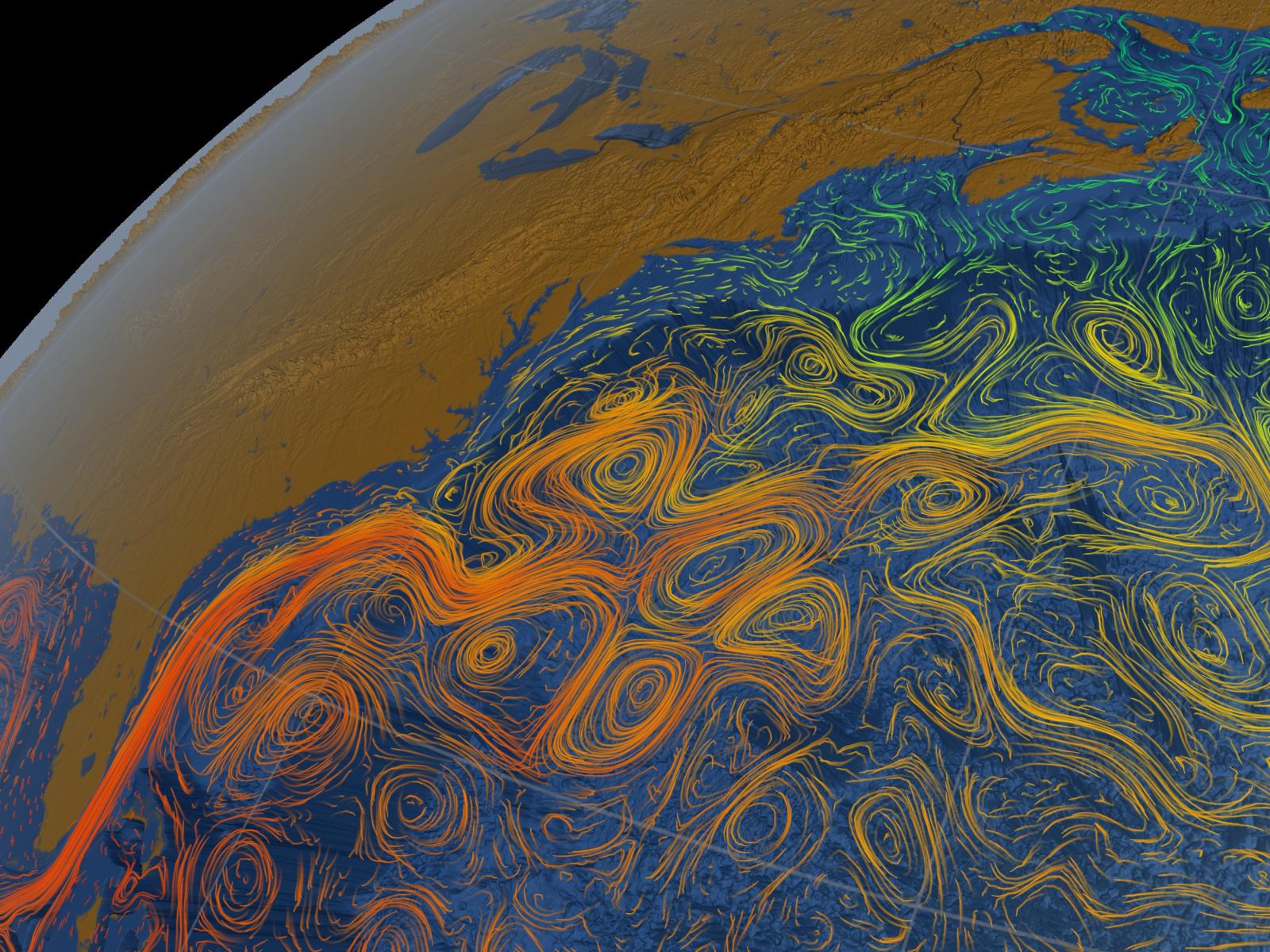Different Aerosol Emission Sources Work Together to Drive the Slowdown of Atlantic Overturning Circulation
Models have identified a new source of anthropogenic emissions driving the observed weakening of the Atlantic Meridional Overturning Circulation

Harbingers for the collapse of the Atlantic Meridional Overturning Circulation.
The Science
The Atlantic Meridional Overturning Circulation (AMOC) plays a prominent role in transporting heat northward, maintaining the temperate climate over Europe and North America. Recently, observational studies suggested an imminent collapse of the AMOC, an indicator of an abrupt shift to a colder climate, which is similar to that in more northern regions. However, the mechanism behind this potential collapse is far from being understood. Thus, we mimicked the forcing effect of the change in aerosol emissions from both the eastern (Asia) and western (the United States and Europe) hemispheres since the mid-1980s. Both forcings, though opposite in sign, are responsible for the observed weakening of the AMOC. A mechanism has been detected to explain the remote effect of the Asian forcing on the deep circulation in the Atlantic.
The Impact
This study provides important rationale for the observed weakening or even collapse of the AMOC since the 1980s. Future changes in the AMOC depend on the details of the balance among the changes in the aerosol emissions over Asia and the western world and global greenhouse emissions. All three positively contribute to the slowdown of the AMOC during the period examined in this study. The continuation of the current trends in these emissions will push the AMOC toward the brink of collapse.
Summary
Both observational evidence and climate models indicate a slowdown of the AMOC since the mid-1980s. Increased greenhouse gases and the declined anthropogenic aerosols (AAs) over North America and Europe are believed to contribute to the AMOC slowdown. Asian AAs continue to increase, but the associated impact has been unclear. Using ensembles of climate simulations, we show for the first time that the radiative cooling resulting from increased Asian AAs drives an AMOC reduction. The increased AAs over Asia generate a circumglobal teleconnection from Asia to the North Atlantic, which shifts and weakens the westerlies over the subpolar North Atlantic. The resultant reduction in the cold advection from the North American continent hinders the deep water formation in the Labrador Sea, which is an important driver for the AMOC. This teleconnection mechanism is confirmed with independent model experiments using different configurations. Thus, reducing emissions of Asian AAs will not only lower local air pollution but help stabilize the AMOC.
Contact
Hailong Wang, Pacific Northwest National Laboratory, hailong.wang@pnnl.gov
Funding
This work was supported by the “Youth Innovation Team Program” team in the College and Universities of Shandong Province (No. 2022KJ042) and by the Department of Energy, Office of Science, Biological and Environmental Research program as part of the Regional and Global Model Analysis program area.
Published: February 27, 2024
Liu F., et al. 2024. “Increased Asian aerosols drive a slowdown of Atlantic Meridional Overturning Circulation.” Nature Communications 15, 18. [DOI: 10.1038/s41467-023-44597-x]